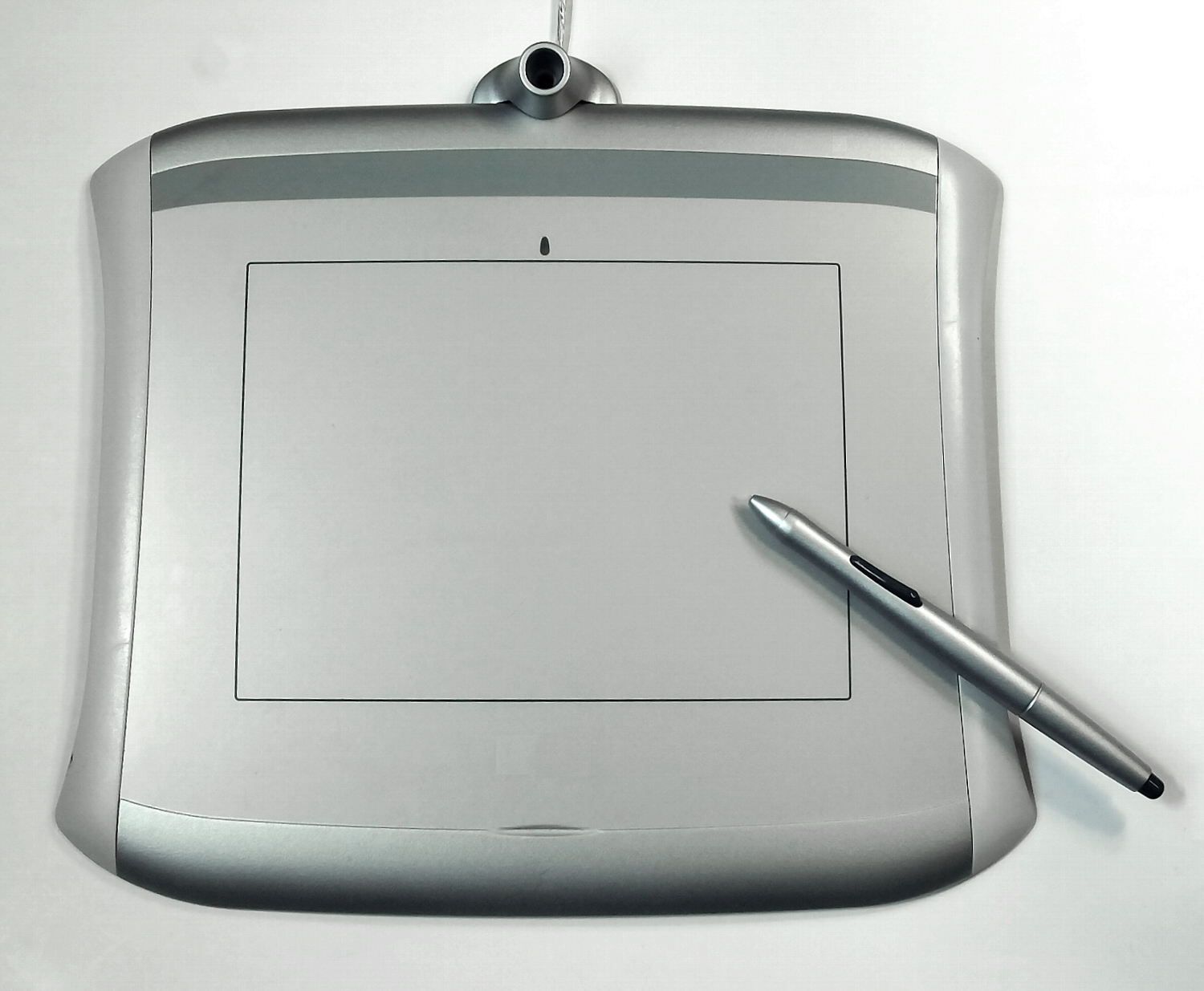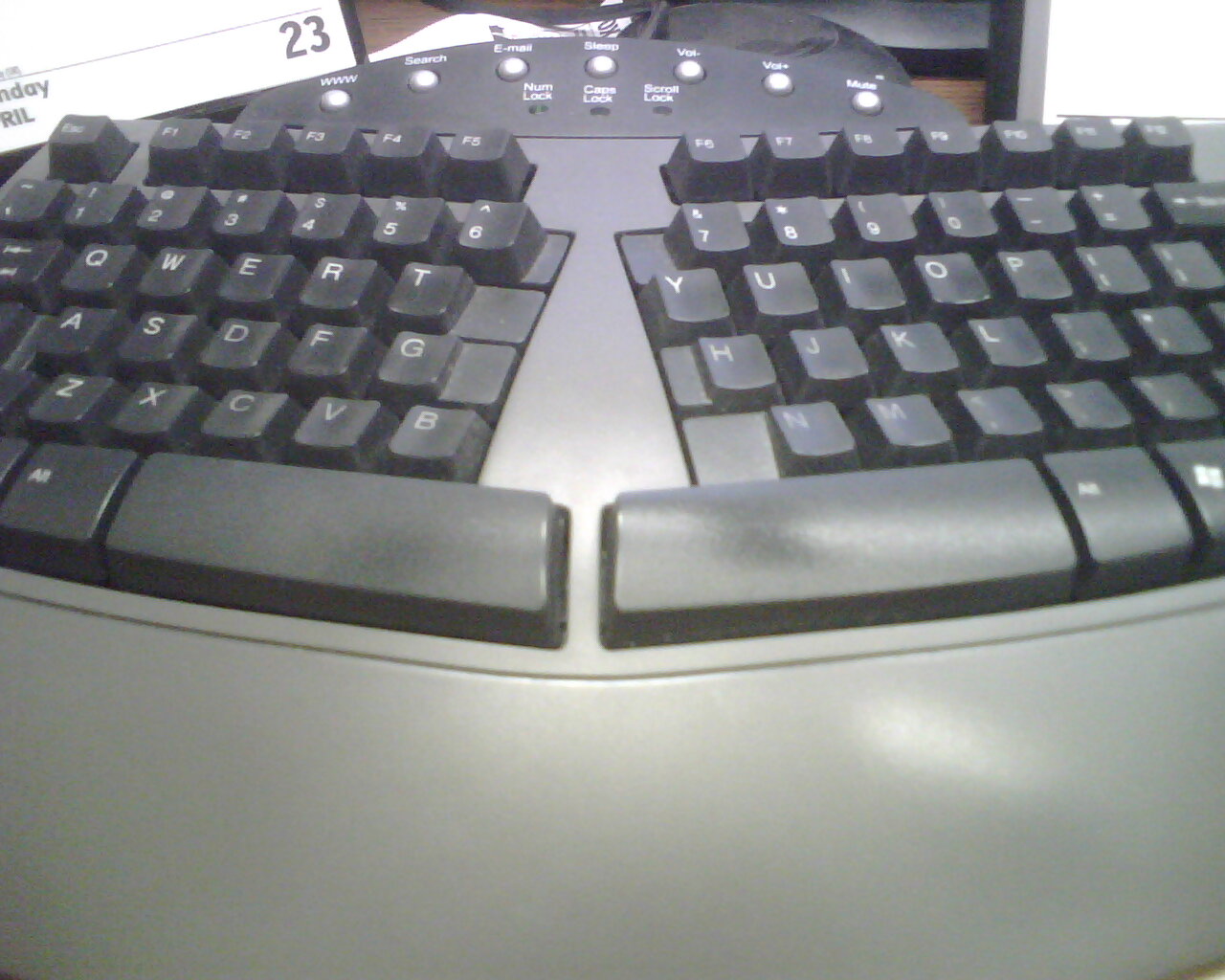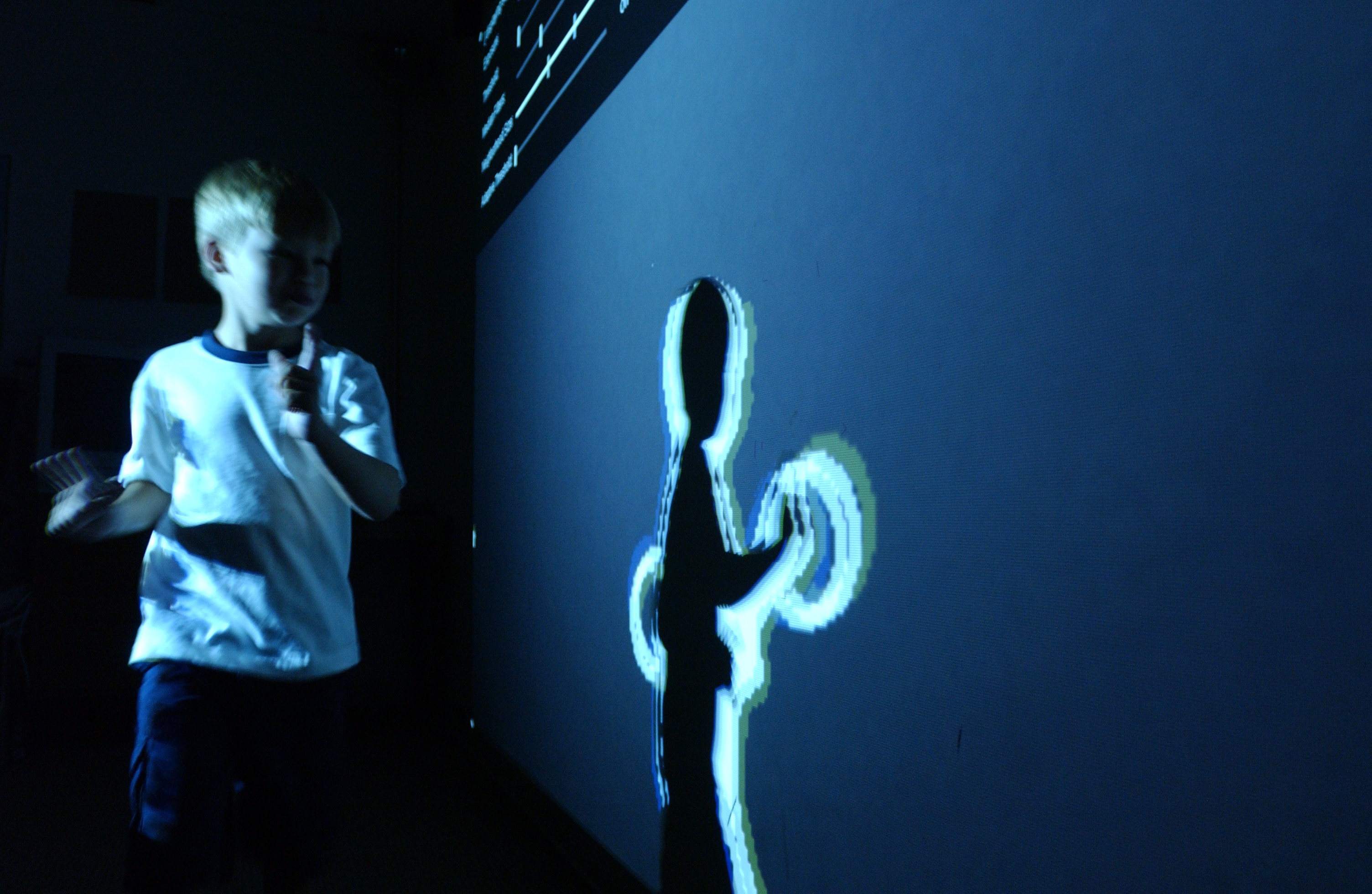|
Hands-on Computing
Hands-on computing is a branch of human-computer interaction research which focuses on computer interfaces that respond to human touch or expression, allowing the machine and the user to interact physically. Hands-on computing can make complicated computer tasks more natural to users by attempting to respond to motions and interactions that are natural to human behavior. Thus hands-on computing is a component of user-centered design, focusing on how users physically respond to virtual environments. Implementations * Keyboards * Stylus pens and tablets * Touchscreens * Human signaling Keyboards Keyboards and typewriters are some of the earliest hands-on computing devices. These devices are effective because users receive kinesthetic feedback, tactile feedback, auditory feedback, and visual feedback. The QWERTY layout of the keyboard is one of the first designs, dating to 1878.Baber, Christopher. ''Beyond the Desktop''. Academic Press. 1997. New designs such as the split keyboard ... [...More Info...] [...Related Items...] OR: [Wikipedia] [Google] [Baidu] |
User-centered Design
User-centered design (UCD) or user-driven development (UDD) is a framework of process (not restricted to interfaces or technologies) in which usability goals, user characteristics, environment, tasks and workflow of a product, service or process are given extensive attention at each stage of the design process. These tests are conducted with/without actual users during each stage of the process from requirements, pre-production models and post production, completing a circle of proof back to and ensuring that "development proceeds with the user as the center of focus." Such testing is necessary as it is often very difficult for the designers of a product to understand intuitively the first-time users of their design experiences, and what each user's learning curve may look like. User-centered design is based on the understanding of a user, their demands, priorities and experiences and when used, is known to lead to an increased product usefulness and usability as it delivers sat ... [...More Info...] [...Related Items...] OR: [Wikipedia] [Google] [Baidu] |
Keyboard (computing)
A computer keyboard is a peripheral input device modeled after the typewriter keyboard which uses an arrangement of buttons or keys to act as mechanical levers or electronic switches. Replacing early punched cards and paper tape technology, interaction via teleprinter-style keyboards have been the main input method for computers since the 1970s, supplemented by the computer mouse since the 1980s. Keyboard keys (buttons) typically have a set of characters engraved or printed on them, and each press of a key typically corresponds to a single written symbol. However, producing some symbols may require pressing and holding several keys simultaneously or in sequence. While most keys produce characters (letters, numbers or symbols), other keys (such as the escape key) can prompt the computer to execute system commands. In a modern computer, the interpretation of key presses is generally left to the software: the information sent to the computer, the scan code, tells it only wh ... [...More Info...] [...Related Items...] OR: [Wikipedia] [Google] [Baidu] |
Stylus (computing)
In computing, a stylus (or stylus pen) is a small pen-shaped instrument whose tip position on a computer monitor can be detected. It is used to draw, or make selections by tapping. While devices with touchscreens such as newer computers, mobile devices (smartphones and personal digital assistants), game consoles, and graphics tablets can usually be operated with a fingertip, a stylus provides more accurate and controllable input. The stylus has the same function as a mouse or touchpad as a pointing device; its use is commonly called pen computing. History The earliest computer-related usage for a stylus was in 1643 with Pascal's calculator. The device had rotary dials that would rotate in accordance to the selected numbers, and with gears, drums, and clever engineering, it was capable of addition, subtraction, multiplication, and division (using 9's constant). The user would use a stylus to turn the dials. Later devices of this type include the Arithmometer, in the 1860s; and ... [...More Info...] [...Related Items...] OR: [Wikipedia] [Google] [Baidu] |
Graphics Tablet
A graphics tablet (also known as a digitizer, digital graphic tablet, pen tablet, drawing tablet, external drawing pad or digital art board) is a computer input device that enables a user to hand-draw images, animations and graphics, with a special pen-like stylus (computing), stylus, similar to the way a person draws images with a pencil and paper. These tablets may also be used to capture data or handwritten signatures. It can also be used to trace an image from a piece of paper that is taped or otherwise secured to the tablet surface. Capturing data in this way, by tracing or entering the corners of linear Polygonal chain, polylines or shapes, is called digitizing. The device consists of a rough surface upon which the user may "draw" or trace an image using the attached stylus (computing), stylus, a pen-like drawing apparatus. The image is shown on the computer computer display, monitor, though some graphic tablets now also incorporate an LCD screen for more realistic or natu ... [...More Info...] [...Related Items...] OR: [Wikipedia] [Google] [Baidu] |
Touchscreen
A touchscreen or touch screen is the assembly of both an input ('touch panel') and output ('display') device. The touch panel is normally layered on the top of an electronic visual display of an information processing system. The display is often an LCD, AMOLED or OLED display while the system is usually used in a laptop, tablet, or smartphone. A user can give input or control the information processing system through simple or multi-touch gestures by touching the screen with a special stylus or one or more fingers. Some touchscreens use ordinary or specially coated gloves to work while others may only work using a special stylus or pen. The user can use the touchscreen to react to what is displayed and, if the software allows, to control how it is displayed; for example, zooming to increase the text size. The touchscreen enables the user to interact directly with what is displayed, rather than using a mouse, touchpad, or other such devices (other than a stylus, which is opti ... [...More Info...] [...Related Items...] OR: [Wikipedia] [Google] [Baidu] |
Typewriter
A typewriter is a mechanical or electromechanical machine for typing characters. Typically, a typewriter has an array of keys, and each one causes a different single character to be produced on paper by striking an inked ribbon selectively against the paper with a type element. At the end of the nineteenth century, the term 'typewriter' was also applied to a ''person'' who used such a device. The first commercial typewriters were introduced in 1874, but did not become common in offices until after the mid-1880s. The typewriter quickly became an indispensable tool for practically all writing other than personal handwritten correspondence. It was widely used by professional writers, in offices, business correspondence in private homes, and by students preparing written assignments. Typewriters were a standard fixture in most offices up to the 1980s. Thereafter, they began to be largely supplanted by personal computers running word processing software. Nevertheless, typewr ... [...More Info...] [...Related Items...] OR: [Wikipedia] [Google] [Baidu] |
QWERTY
QWERTY () is a keyboard layout for Latin-script alphabets. The name comes from the order of the first six Computer keyboard keys#Types, keys on the top left letter row of the keyboard ( ). The QWERTY design is based on a layout created for the Sholes and Glidden typewriter and sold to E. Remington and Sons in 1873. It became popular with the success of the Remington No. 2 of 1878, and remains in ubiquitous use. History The QWERTY layout was devised and created in the early 1870s by Christopher Latham Sholes, a newspaper editor and printer who lived in Kenosha, Wisconsin. In October 1867, Sholes filed a patent application for his early writing machine he developed with the assistance of his friends Carlos Glidden and Samuel W. Soule, Samuel W. Soulé. The first model constructed by Sholes used a piano-like keyboard with two rows of characters arranged alphabetically as shown below: - 3 5 7 9 N O P Q R S T U V W X Y Z 2 4 6 8 . A B C D E F G H I J K L M Sholes struggled ... [...More Info...] [...Related Items...] OR: [Wikipedia] [Google] [Baidu] |
Ergonomic Keyboard
An ergonomic keyboard is a computer keyboard designed with ergonomic considerations to minimize muscle strain, fatigue, and other problems. Features The common QWERTY keyboard layout is credited to the mechanical typewriter designed by C. Latham Sholes and patented in 1878; research indicates the layout may have been influenced by telegraph operators. The offset in the columns between rows was designed to accommodate the physical links between each key and the internal mechanisms of the typewriter; as typing duties transitioned to electric (motorized) typewriters and then computers, the layout was retained to ease the transition for users that had already been trained to type. However, the legacy mechanical layout has numerous idiosyncrasies, including the staggered column layout, which can force the user into uncomfortable, repetitive movements and postures. Several potential solutions have been proposed since at least 1926. In general, ergonomic keyboards are designed to minimi ... [...More Info...] [...Related Items...] OR: [Wikipedia] [Google] [Baidu] |
Push-button
A push-button (also spelled pushbutton) or simply button is a simple switch mechanism to control some aspect of a machine or a process. Buttons are typically made out of hard material, usually plastic or metal. The surface is usually flat or shaped to accommodate the human finger or hand, so as to be easily depressed or pushed. Buttons are most often biased switches, although many un-biased buttons (due to their physical nature) still require a spring to return to their un-pushed state. Terms for the "pushing" of a button include pressing, depressing, mashing, slapping, hitting, and punching. Uses The "push-button" has been utilized in calculators, push-button telephones, kitchen appliances, and various other mechanical and electronic devices, home and commercial. In industrial and commercial applications, push buttons can be connected together by a mechanical linkage so that the act of pushing one button causes the other button to be released. In this way, a stop button ... [...More Info...] [...Related Items...] OR: [Wikipedia] [Google] [Baidu] |
Selection (user Interface)
In computing and user interface engineering, a selection is a list of items on which user operations will take place. The user typically adds items to the list manually, although the computer may create a selection automatically. Selections are enacted through combinations of key presses on a keyboard, with a precision pointing device (mouse or touchpad and cursor, stylus), or by hand on a touchscreen device. The simultaneous selection of a group of items (either a subset of elements in a list, or discontinuous regions in a text) is called a ''multiple selection''. Context menus will usually include actions related to the objects included in the current selection - the selection provides the "context" for the menu. Types Uses * Text selection is associated with the cut, copy and paste operations and done with a cursor, caret navigation or touch. * Image editing applications can feature specialized graphical tools for the selection and modification of areas and shapes or to ... [...More Info...] [...Related Items...] OR: [Wikipedia] [Google] [Baidu] |
Gesture Recognition
Gesture recognition is a topic in computer science and language technology with the goal of interpreting human gestures via mathematical algorithms. It is a subdiscipline of computer vision. Gestures can originate from any bodily motion or state, but commonly originate from the face or hand. Focuses in the field include emotion recognition from face and hand gesture recognition, since they are all expressions. Users can make simple gestures to control or interact with devices without physically touching them. Many approaches have been made using cameras and computer vision algorithms to interpret sign language, however, the identification and recognition of posture, gait, proxemics, and human behaviors is also the subject of gesture recognition techniques. Gesture recognition can be seen as a way for computers to begin to understand human body language, thus building a better bridge between machines and humans than older text user interfaces or even GUIs (graphical user interf ... [...More Info...] [...Related Items...] OR: [Wikipedia] [Google] [Baidu] |






